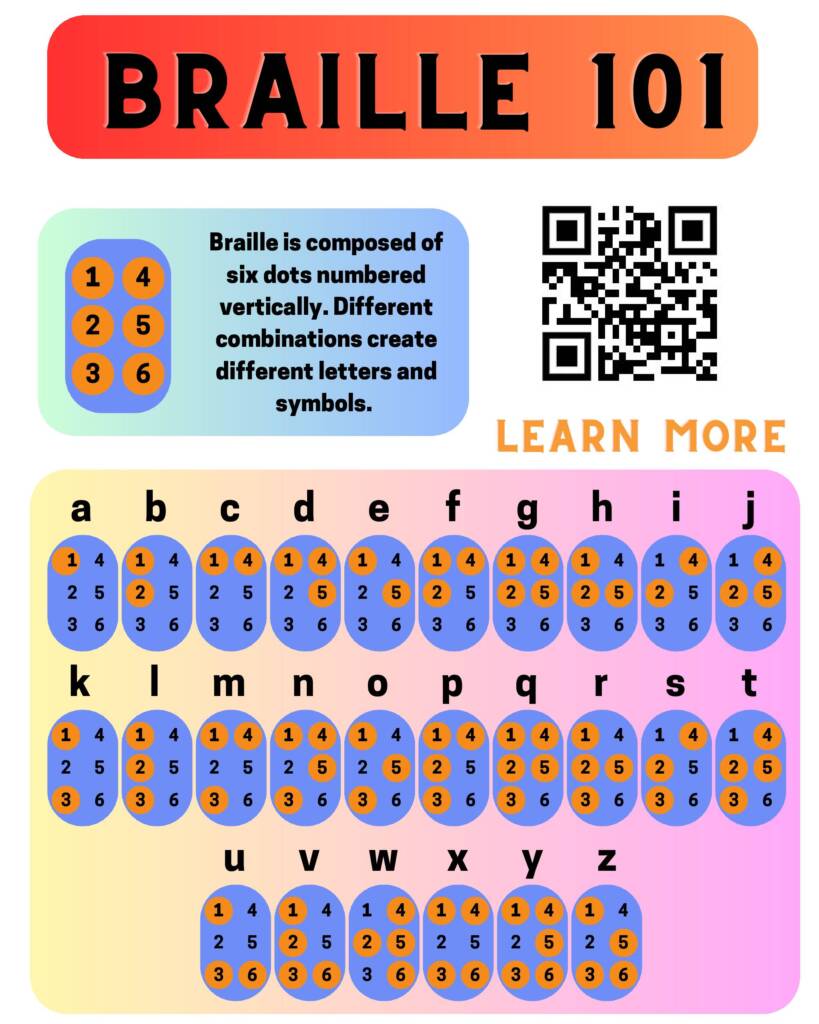By Chris Tabb, COMS
The American Heritage Dictionary has two definitions for “literacy”. The first is, “The condition or quality of being literate, especially the ability to read and write.” The second definition is a bit more global, “The condition or quality of being knowledgeable in a particular subject or field…”. So how does Orientation and Mobility relate to literacy? On first glance it may seem to have nothing at all to do with reading and writing. Although we “read” things like signage while practicing independent movement for orientation and mobility, often in raised print or braille, and we may write things as part of orientation and mobility activities, such as directions or shopping lists, is there a “language” unique to orientation and mobility?
Mall Directories
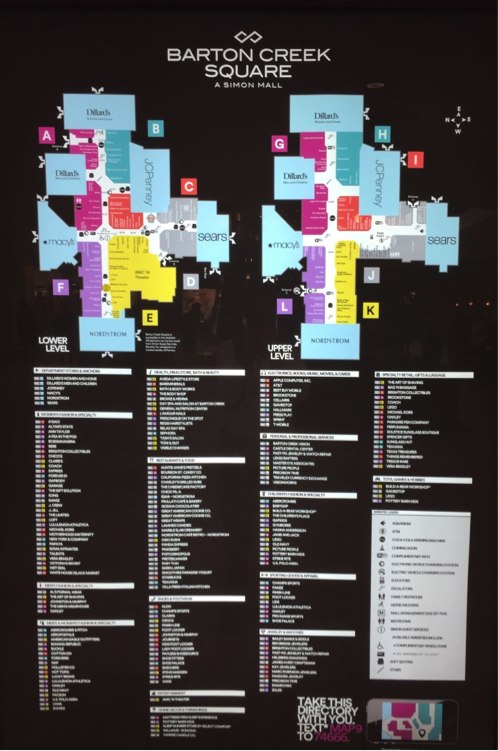 Although students have made the transition to Unified English Braille (UEB) from English Braille American Edition (EBAE), they will find that many locations will still remain in EBAE in terms of orientation and mobility. It is not likely that many buildings will immediately jump on the UEB bandwagon to swap out signage to reflect changes made in UEB. In fact, it would be surprising if signage companies were at this time even aware of the shift to UEB. So, most travelers will need to be aware of both EBAE and UEB for the foreseeable future, or at least be fault-tolerant and willing to do a bit of detective work to resolve differences in the braille code they find beyond their text books and state testing forms. But “literacy” and the language of orientation and mobility goes beyond signage. There is literacy found in many areas of independent travel: directory signage, reading grocery store aisle markers/information, bus schedules, step-by-step directions provided by map software, traffic control literacy expressed in shapes, symbols and colors, and even a scientific style of location literacy expressed through latitude and longitude coordinates which can be expressed in multiple formats.
Although students have made the transition to Unified English Braille (UEB) from English Braille American Edition (EBAE), they will find that many locations will still remain in EBAE in terms of orientation and mobility. It is not likely that many buildings will immediately jump on the UEB bandwagon to swap out signage to reflect changes made in UEB. In fact, it would be surprising if signage companies were at this time even aware of the shift to UEB. So, most travelers will need to be aware of both EBAE and UEB for the foreseeable future, or at least be fault-tolerant and willing to do a bit of detective work to resolve differences in the braille code they find beyond their text books and state testing forms. But “literacy” and the language of orientation and mobility goes beyond signage. There is literacy found in many areas of independent travel: directory signage, reading grocery store aisle markers/information, bus schedules, step-by-step directions provided by map software, traffic control literacy expressed in shapes, symbols and colors, and even a scientific style of location literacy expressed through latitude and longitude coordinates which can be expressed in multiple formats.For students with low vision:
- Use those monoculars and hand held magnifiers! If you have more than one, you can use one along with the student to show them it is okay to use in public and help them to feel more comfortable as you demonstrate.
- Great opportunity to use the camera on a smartphone or iPad to take a photo to zoom in; you even get to bring the directory along with you once it is photographed and stored on the device.
For students who are nonvisual:
- Using an app such as KNFB Reader or another text to speech app makes all this information accessible.
- Try downloading an electronic mall directory that VoiceOver or TalkBack can read aloud or send to a refreshable braille display.
- Perfect opportunity to talk about adaptive strategies like locating the information desk that is usually in the center of the mall to get “live” directory information.
Expanded Core Curriculum (ECC) Areas Covered:
- Assistive Technology if you are using visual tools, and or are using smartphones or tablets
- Social Interaction Skills if you visit the information desk at the mall or talk with others at the directory
- Orientation and Mobility all the way
- Career Education: if you want to work at the mall, you will have to know how to get through it and if you want to dress well for work, you will likely have to shop at the mall.
- Recreation and Leisure can be finding the food court and the movie theater
Store Signage and Maps

Okay, I know I am old, but I sure do not remember grocery stores having anywhere near 60 aisles. With the proliferation of “Super” and “Plus” size stores, the challenges have changed a bit. Sometimes stores will have reference maps at the Customer Service Desk, at the end of the aisles, or available online. These can be previewed before the trip to the store or even brought along on an iPad or smartphone. Other strategies and tips almost duplicate those from the mall directory.
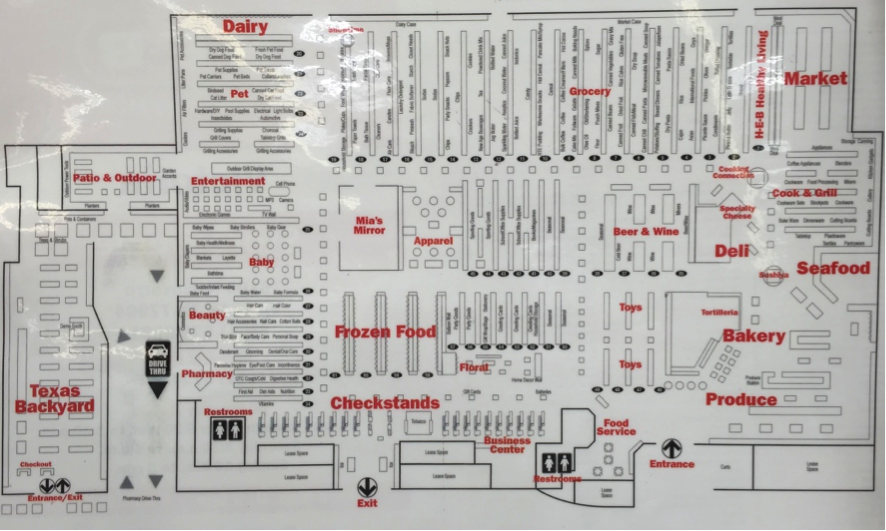
For students with low vision:
- Keep using those monocular telescopes and hand held magnifiers. Another great place to practice together. If other customers are curious and ask questions, it gives you the opportunity to model appropriate responses to the general public.
- Cameras on a smartphone or iPad to take a photo to zoom in; even if the student cannot see the detail on the sign before the photo, they can aim toward the color or shape of the aisle marker and zoom in for the food items in the aisle.
For students who are nonvisual:
- Using an app such as KNFB Reader or another text to speech app might make this information accessible even as part of overhead signage. Practice with the app and the camera in different areas before the trip to make the learning fun as the skills are acquired.
- Try checking online or calling the Customer Service desk to request digital map or aisle listing of the store if available.
- Perfect opportunity to talk with the store Staff and other shoppers about how the aisles are located, in which direction the numbers get bigger, etc.
Expanded Core Curriculum (ECC) Areas Covered:
- Assistive Technology if you are using visual tools, and or are using smartphones or tablets
- Social Interaction Skills if you visit Customer Service or talk with other shoppers; you can even go to the Bakery and ask if they still give away free cookies
- Orientation and Mobility all the way again
- Independent Living Skills; you have to buy food at some point
- Career Education, why not pick up an application or talk about the various jobs people do at a grocery store
- Recreation and Leisure can someone say TOY AISLE
Braille and Tactile Graphics

Though there is not braille for everything there is in print, with little effort you can find ample opportunities to practice accessing location information from signage. It might be that student who just loves machine sounds and wants to find the elevator room to listen to the noise and practice their sensory skills, or perhaps it is just feeling the raised shapes of the bathroom indicators to determine which is for the boys and which is for the girls (oh, you can always count the letters with your students too; girls and women always have more letters that boys and men).
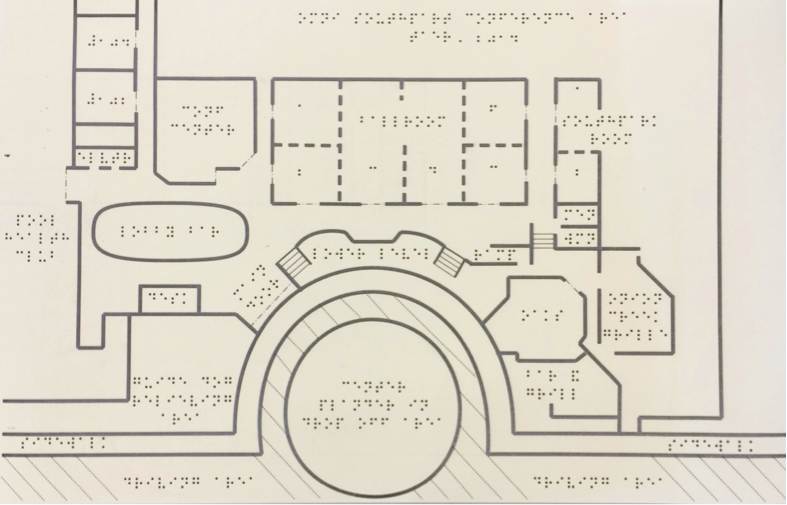


For students with low vision:
- Monocular telescopes with close focus lens capability to allow focusing within 18” or so, and hand held magnifiers. Keep practicing together and building that rapport. You can also talk about strategies for working with screen glare.
- Cameras on a smartphone or iPad to take a photo and then zoom in; you can also use the video camera setting to capture sound if there is an auditory component to review.
For students who are nonvisual:
- Using KNFB Reader or other text to speech app.
- Try checking online or calling Customer Service for any available online information about using devices like the fare machine.
Expanded Core Curriculum (ECC) Areas Covered:
- Assistive Technology if you are using visual tools, and or are using smartphones or tablets
- Social Interaction Skills if you talk with Customer Service or talk with others in the environment
- Orientation and Mobility; all part of independent travel skills
- Sensory Efficiency, lots of tactile information here, even some auditory if the signs have a speech option
- Career Education, how many careers can you find and talk about in a lesson; not to mention the opportunity to have a quick interview with anyone working for public transportation, etc.
- Compensatory Skills, although you may not be a Teacher of Students with Visually Impairments (TVI) you can still encourage the student to use their braille skills, tactile skills, and auditory skills to access information
Pedestrian Information
Street crossing hardware and tactile warning strips (“speaking the language” of the warning strips to know what they mean in any situation), and Accessible Pedestrians Signals (APS) that can be ready, either visually in print, braille, or auditorally are just a few of the examples.
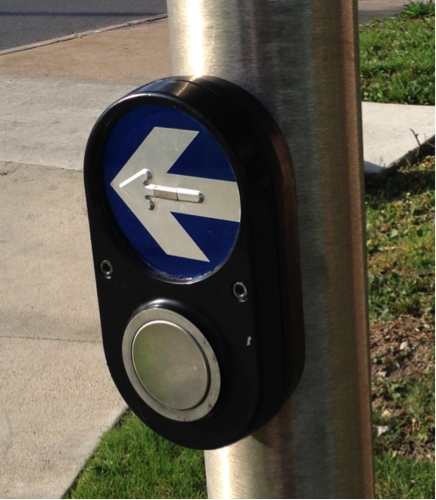

For students with low vision:
- Monocular telescopes; great to practice ahead of time or bring folding camp chairs to have a comfortable way to practice at the intersection so the added stress of traffic does not cause undue anxiety.
- Cameras on a smartphone or iPad to take a photo and then zoom in; you can also use the video camera setting to capture sound if there is an auditory component to review.
For students who are nonvisual:
- Using KNFB Reader or other text to speech app if there is print information.
Expanded Core Curriculum (ECC) Areas Covered:
- Assistive Technology if you are using visual tools, and or are using smartphones or tablets
- Orientation and Mobility; street crossing skills
- Sensory Efficiency, lots of tactile information here and plenty of auditory to match with traffic patterns even if there is not an APS
- Career Education, you might even be able to have a discussion about traffic engineers and who controls traffic light timing and or a discussion about public safety careers
- Compensatory Skills, braille, tactile information, listening skills for instructions from the APS
There are many other examples to include for exploring with public transportation and using advanced systems like GPS but we can save that for a future post…




